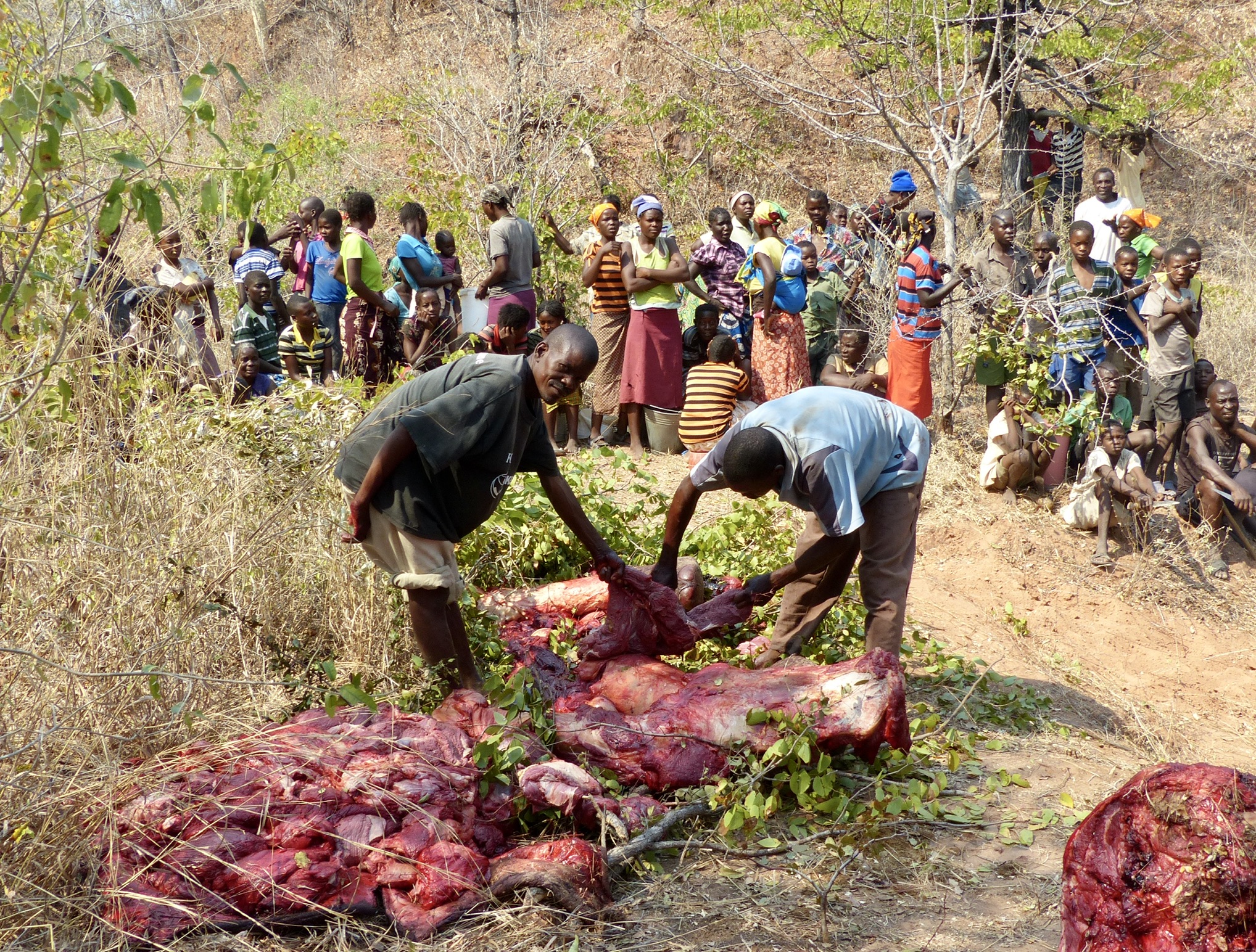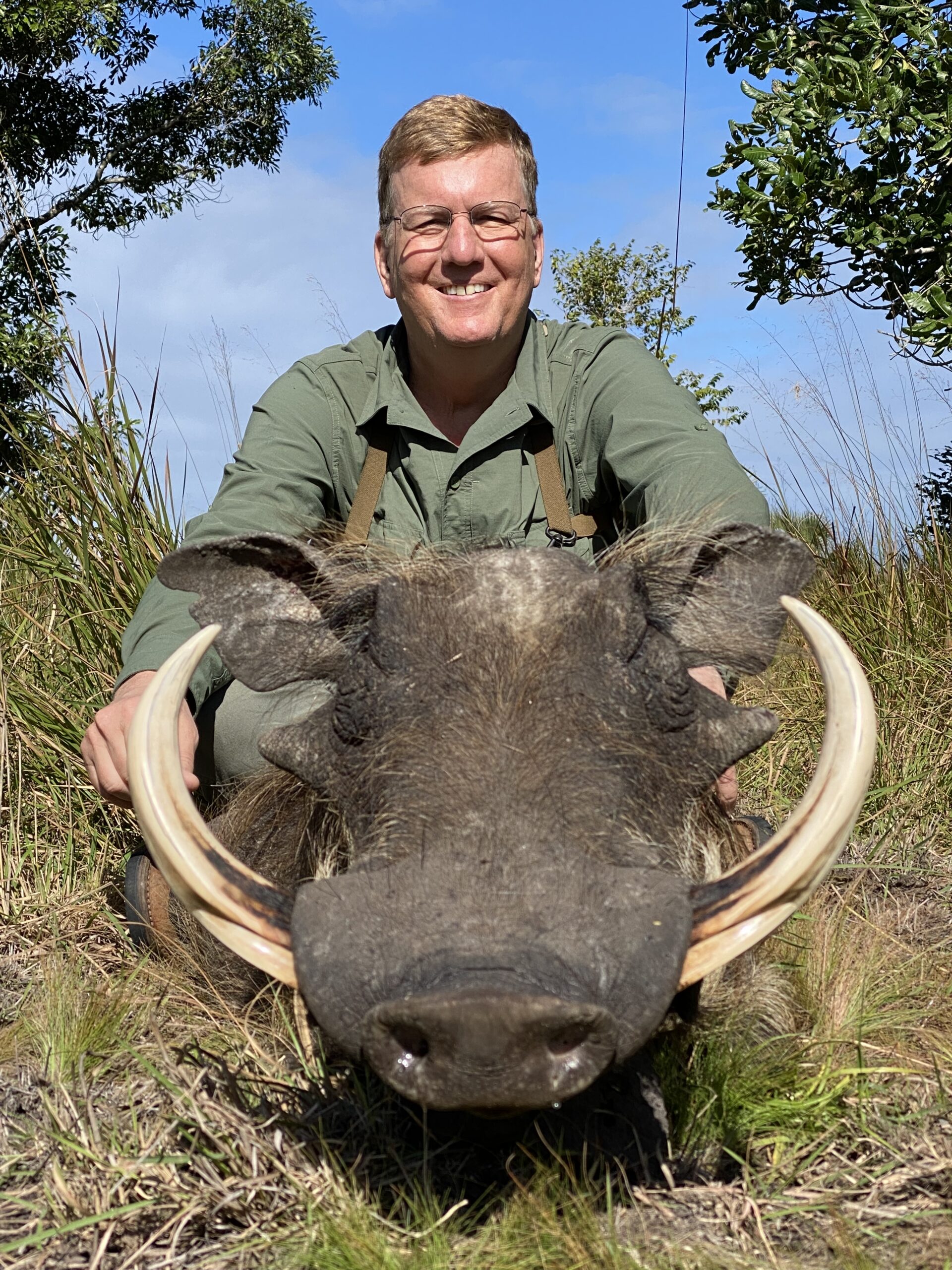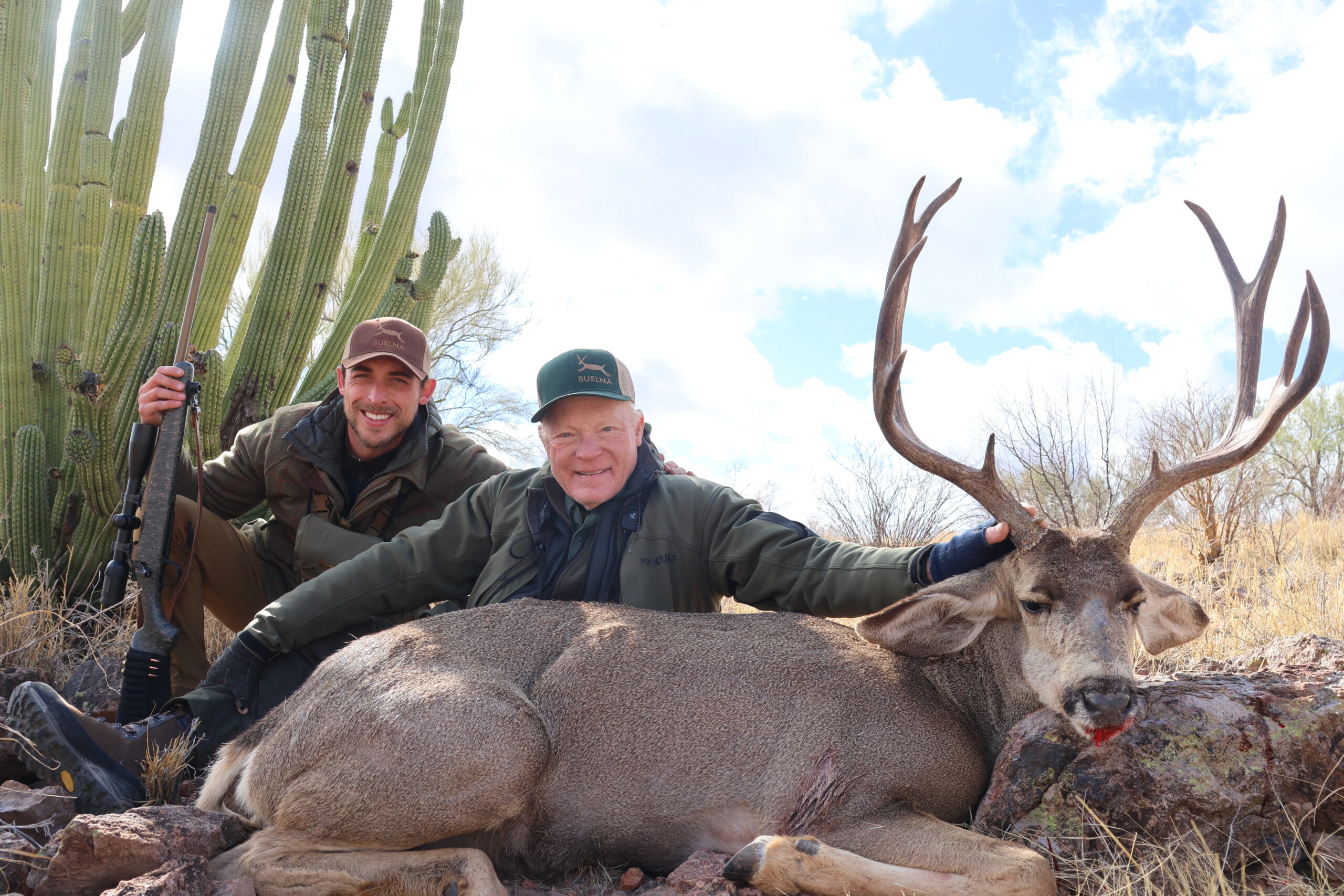The Big Empty
This is what you’re missing if you’re waiting for pheasant season.
By Ryan Sparks, Associate Editor
This is a sneak peak from Safari Magazine’s forthcoming “Uplands” Special Section in the 2023 November-December issue. Stay tuned for stories about Georgia quail hunting, upland birds of the world, and the best gear for your upland adventures. For advertising, contact [email protected].
As I parked the truck on an abandoned dirt road, the sun was still well below the horizon. Jerry and I sipped coffee and talked, waiting for the day’s first light as our dogs shifted anxiously in the back. An hour later, we slipped shells into our guns, set the dogs loose, and waded into the vast sagebrush sea. It was the first day of September in Montana, opening day for one of North America’s earliest upland seasons.
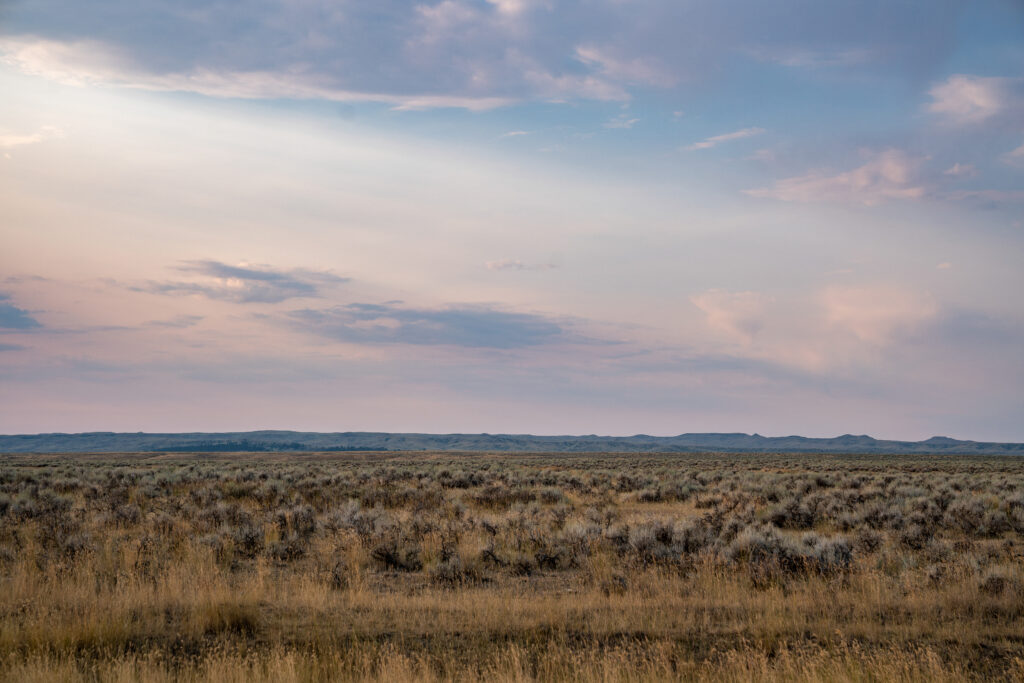
Montana’s upland opener draws some of the most hardcore bird hunters from around the country. For some, loading dogs and heading to the prairies is a yearly pilgrimage akin to opening day of dove season in the American South. These hunters flock to a landscape others might rush to escape. This big, empty country is a hidden Eden disguised by a humble topography. Montana offers arguably the best early upland season because it offers the opportunity to hunt sharp-tailed grouse, Hungarian partridge, and one of the American West’s most iconic species, sage grouse.
The day before, my friend Jerry and I had finished a nearly 20-hour drive and found a place to camp in the shade of cottonwoods along the shore of a mid-sized lake. Now we would see if the long drive and our scouting efforts would produce the sage grouse we had come for.
My pointer, Tippet, and Jerry’s setter, Willie, quartered back and forth in the sage. The temperature was already in the low 70s and in a few hours, it would become dangerously hot for the dogs.
Working our way up an eroded rise, Tippet whirled, testing the wind, and a group of birds lifted from the sage. Four barrels emptied, and two sage grouse fell back to earth. We admired them in the rising sunlight before tucking them in our vests and turning back towards the truck several miles behind us. On the hike back, we smiled with every step. We had both just shot our first sage grouse.
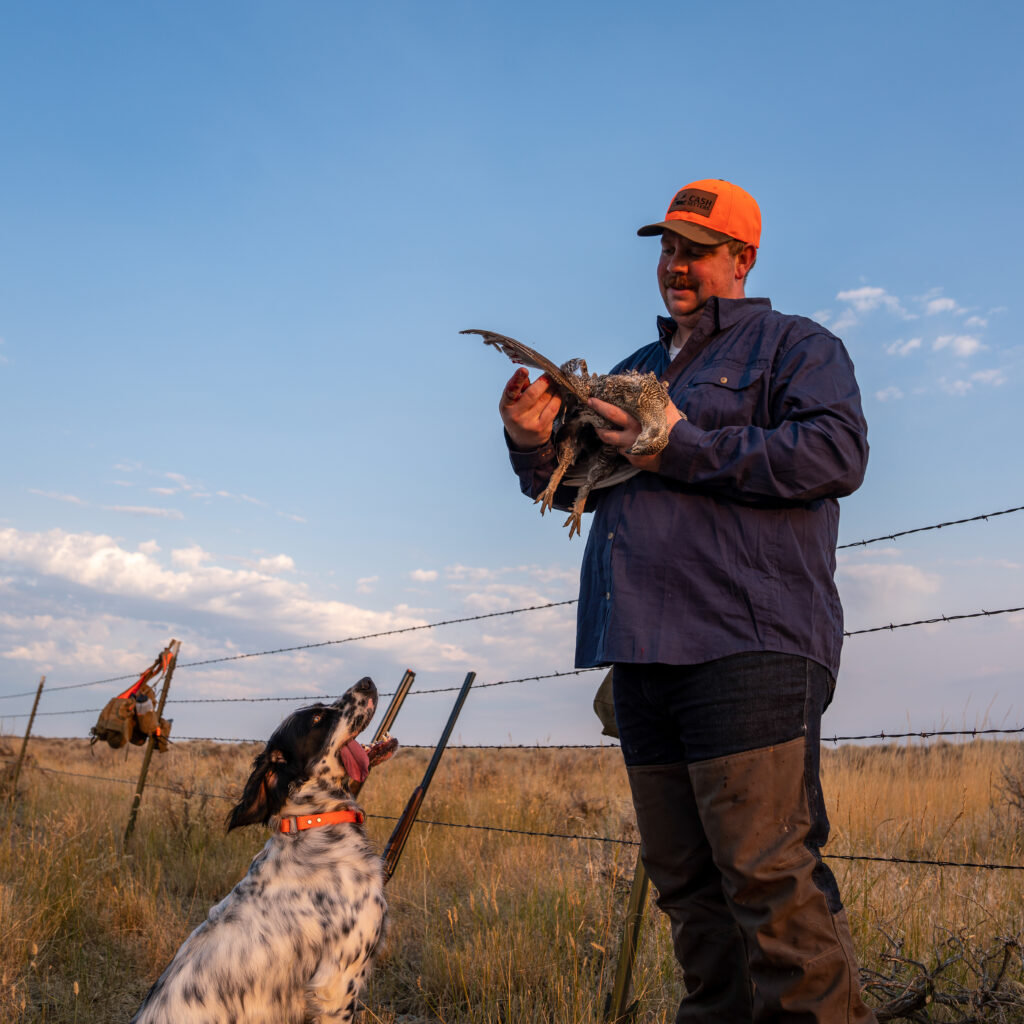
Sage grouse define the American West. Inhabiting the sprawling sagebrush steppe, they are the largest grouse in North America and display long, spiked tail feathers and plumage perfectly matched to the stark landscape they call home. Males, affectionately referred to as “bombers,” are twice the size of females. Despite their large bodies, sage grouse are strong fliers and can reach speeds of 50 mph and cover distances of 6 miles in a single flight. Their elaborately beautiful mating rituals are the subject of numerous nature documentaries.
Much has been written about the decline in sage grouse numbers, largely relating to the destruction of habitat in the American West. America’s largest and most eccentric upland bird has declined over the past century to about 400,000 birds. The population was once estimated at 16 million.

Sage grouse are currently found in 11 Western states, but hunting opportunities are increasingly limited. Numerous studies have demonstrated that regulated hunting has no measurable effects on sage grouse populations, and Jerry and I only wanted a bird or two apiece. As we drove back to camp, our talk turned to sharptails and Huns.
The evening before, as we pounded tent stakes into the hard, dry ground, we were second-guessing our camp location when a sharptail weaved under our picnic table and around our fire ring before flying into a small draw behind camp. After our early success on sage grouse, we had a fairly good idea of where to look for sharpies.
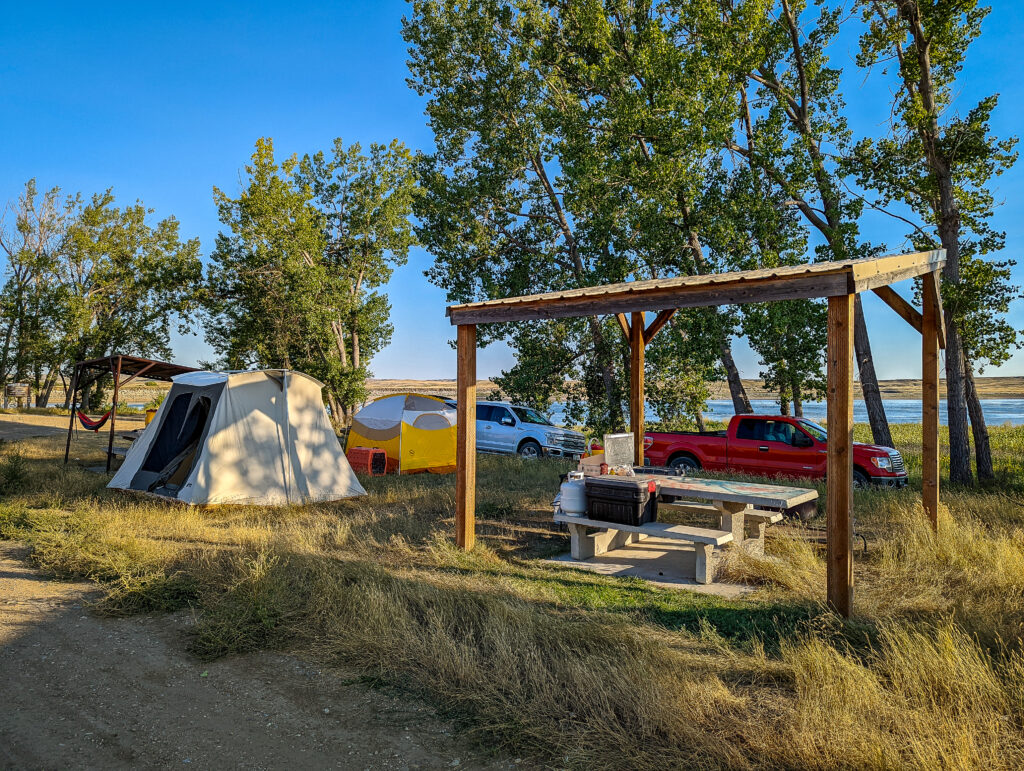
The temperature had risen into the low 80s, but with the lake nearby for the dogs to cool down, we decided to explore the wrinkled hills east of camp.
The cover was broken with patches of wild rose, buckbrush, and Russian olives running through the small draws that bled down into the lake. With camp still in view behind us, Tippet pointed a group of birds but then decided she was mistaken. When she broke point, four sharpies flew into the distance. As we approached the location of Tippet’s error, two more birds chortled from the prairie grass ahead of us. Jerry dropped one and I took a few more steps before another pair flushed to the side. I snapped a single shot and dropped the one closest to me. Thankful for the naïve early season birds, we praised the dogs and retreated to the shade.

Like other prairie birds, sharp-tailed grouse thrive in open grasslands with very little to no tree cover. The lack of trees cuts down on aerial predators who pick them off from above. While sharptails don’t need an abundance of water to survive, you will often find higher concentrations near water sources like the lake we camped by.
In the early season, sharpies bunch into large flocks and loaf in places with open views where they can spot danger from afar. When hunting sharptails, I’ve often been amazed to find them in wheat stubble or grass that is only a few inches tall.
Sharptails can be tough to sneak up on, but in the early season they are often unaccustomed to hunting pressure, and while some birds may flush from afar, a few stragglers usually hold long enough for a hunter to get within shooting distance. It is beneficial to watch where sharptails land after a flush because they will often hold tight and allow a second shot opportunity. I know one Montana upland guide who carries a monocular on his belt to track birds after the initial flush. He doesn’t lug around the extra weight for nothing.

Back at camp we plucked and drew our birds, looked over the dogs, made sandwiches for lunch and napped in the shade as the temperature rose to over 100 degrees. A few hours before dusk, we decided to load the dogs and scout some areas for the next day. We drove for miles along desolate dirt roads, noting spots where the habitat looked good.
Approaching a piece of Block Management ground, a cooperative program between private landowners and Montana Fish Wildlife & Parks that pays landowners to allow public hunting access, we signed in at the gate and rolled across the cattle guard. A few miles in, we came across a spot where wheat stubble bordered an abandoned homestead surrounded by prairie grass.
Neither of us had ever encountered Hungarian partridge before, but everything we had read said to look for areas where grass meets grain, and several friends with Hun experience told us they are suckers for old building sites. This spot seemed to have it all. With an hour of shooting light left, we pulled to the side of the road and made a plan.
While the main goal of our trip was sage grouse, Huns were a close second. Jerry and I grew up in southeast Nebraska hunting bobwhite quail, and everyone we talked to described Huns like oversized bobwhites — large coveys, explosive flushes and quick-flying birds. In fact, those characteristics are what brought Huns to North America in the first place.
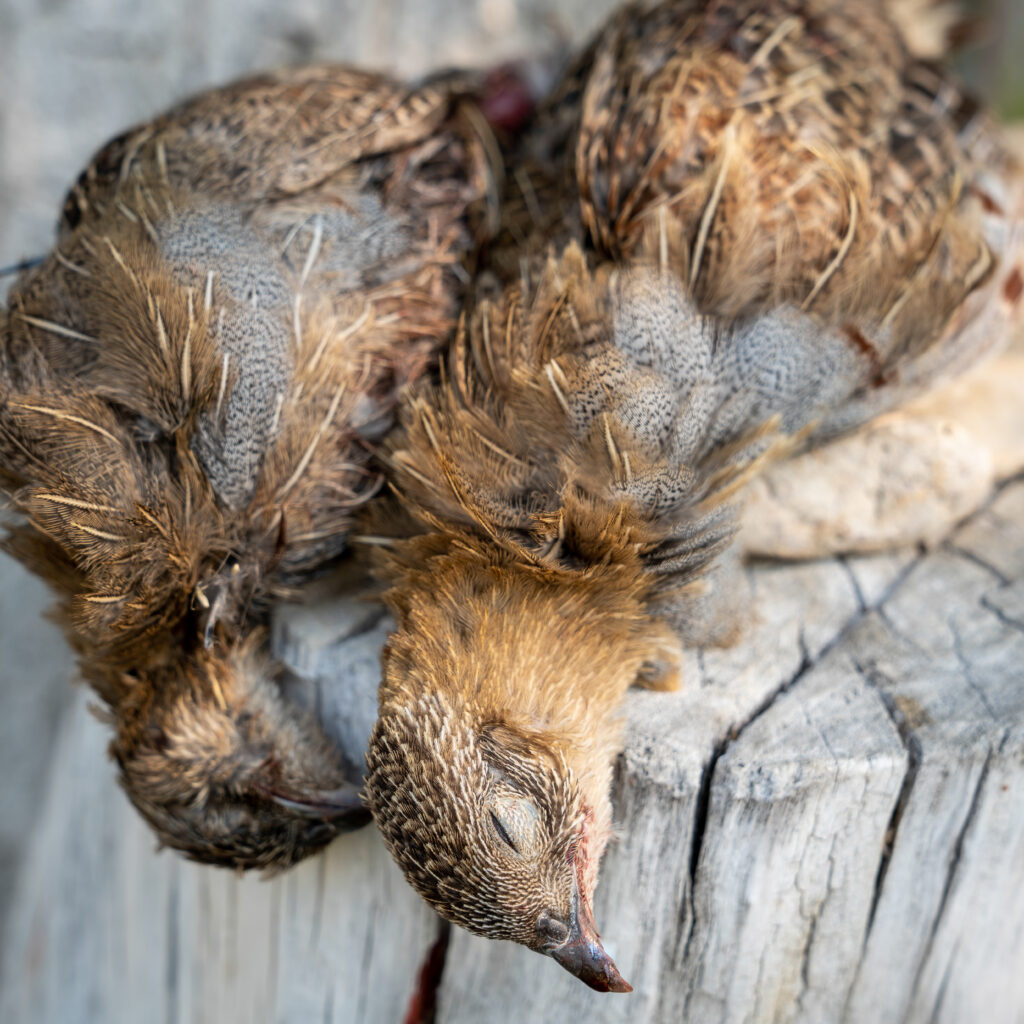
Hungarian partridge are native to Eastern Europe. Years ago, sportsmen brought them to North America because they thought that native sharp-tailed grouse would decline with the conversion of Western grasslands to agricultural use. Huns quickly took hold, climbing to a huntable population in just a few years. From there the Hun’s range expanded to the agricultural states where hunters pursue them today. While such an introduction would never happen these days, Huns are an anomaly among introduced species as they have had no detrimental effect on native species.
Huns are known for being skittish, and the ideal Hun dog will cover a wide swath of ground, find birds, and point from afar until the hunter shows up. Compared to the popcorn-like rise of a covey of bobwhites, Huns go up all together. Because they often come out of light cover, they get up fast. Just like bobwhites, the goal is to pick a bird, shoot, and then plan to shoot again because you probably missed.
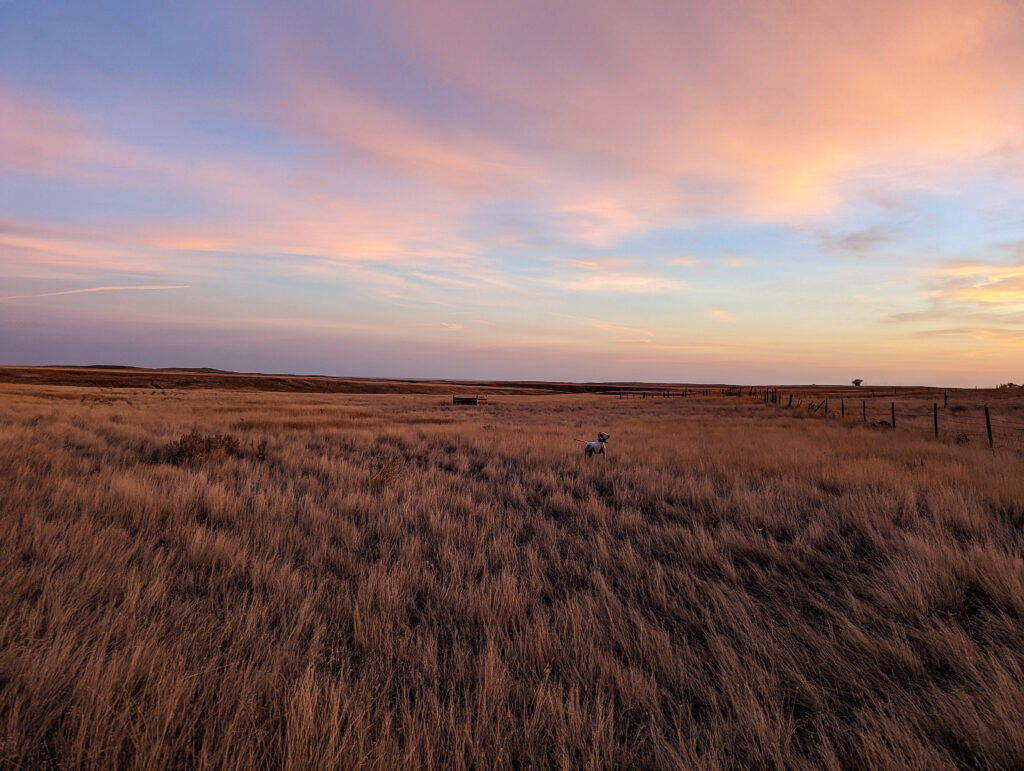
“Follow your bird dog for as far as you can see. Watch out for rattlesnakes. Get up early to wait for the sun. When it gets hot, keep to the shade. Camp in some hidden grassy draw. Shoot quickly and learn to slow down.”
Jerry and I decided to take the dogs and circle far downwind of the abandoned homestead, working a wide strip of grass adorned with rusting farm machinery sandwiched between two cut wheat fields. It looked too good to not hold birds.
About halfway to the old farmhouse, both dogs got birdy, but when we walked in to flush, we found nothing. Another hundred yards and the scene repeated. When we reached the last bit of grass before the road, Tippet slammed on point between an old auger and an overgrown harrow. I assumed it was another false point and grabbed my phone to take a photo. Birds or no birds, she looked good. After snapping a photo, I put the phone back in my pocket, took a few steps, and over 20 Huns whirled into the setting sun.
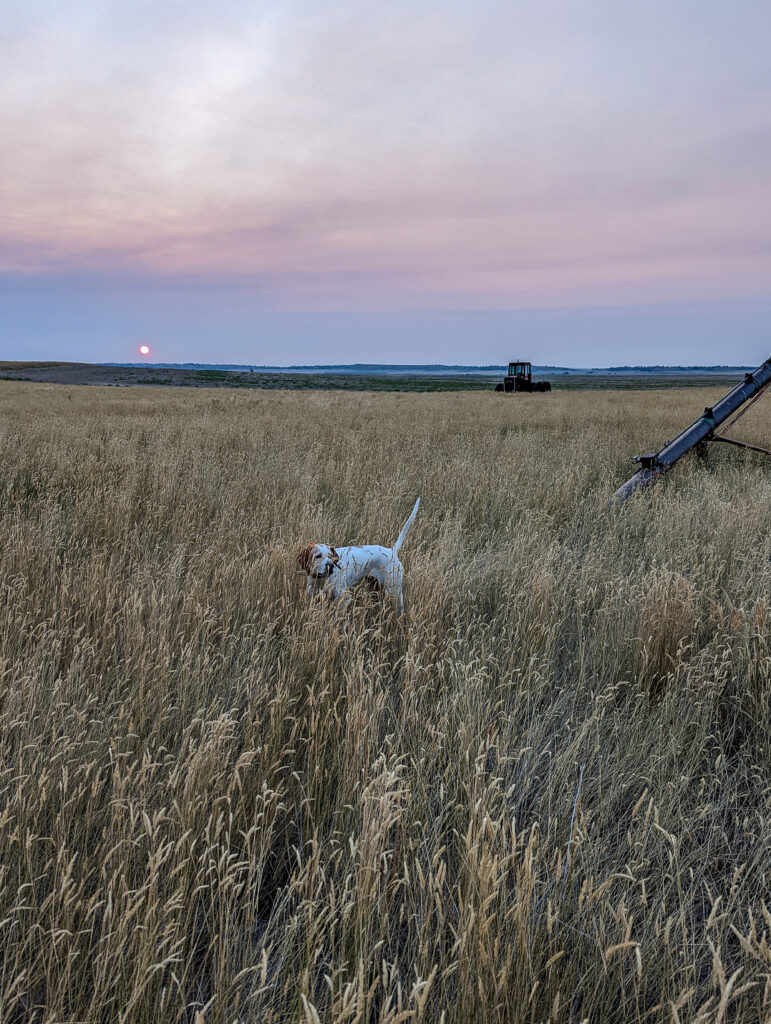
Jerry’s shotgun barked and I concentrated on isolating a single bird from the blur of feathered bodies streaking into the air. I slapped off two shots and watched my bird fall. I then turned to see Jerry empty his second barrel at a bird to his right. At the shot, feathers puffed, but it kept flying over a small rise ahead of us, eventually crash-landing on the other side. We reloaded our shotguns and got the dogs looking for our three downed birds.
We found the two closest birds quickly, and then spent the next half hour looking for the far bird but came up empty-handed. Still, this was only a small damper on an otherwise spectacular day. In a single day, Jerry and I had shot our first sage grouse, first Huns, and completed Montana’s early season upland slam. It was the kind of day we grew up dreaming about, and we still had six days left to hunt.

To the casual observer, Montana’s sagebrush sea and expansive prairie can seem desolate and barren, a collection of treeless horizons and nameless prairie washes. Yet the big empty is not as empty as it might appear. In fact, it holds a collection of species that add to the rugged and untamable spirit of the American West. This landscape also has several lessons to teach. Follow your bird dog for as far as you can see. Watch out for rattlesnakes. Get up early to wait for the sun. When it gets hot, keep to the shade. Camp in some hidden grassy draw. Shoot quickly and learn to slow down.


